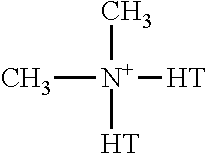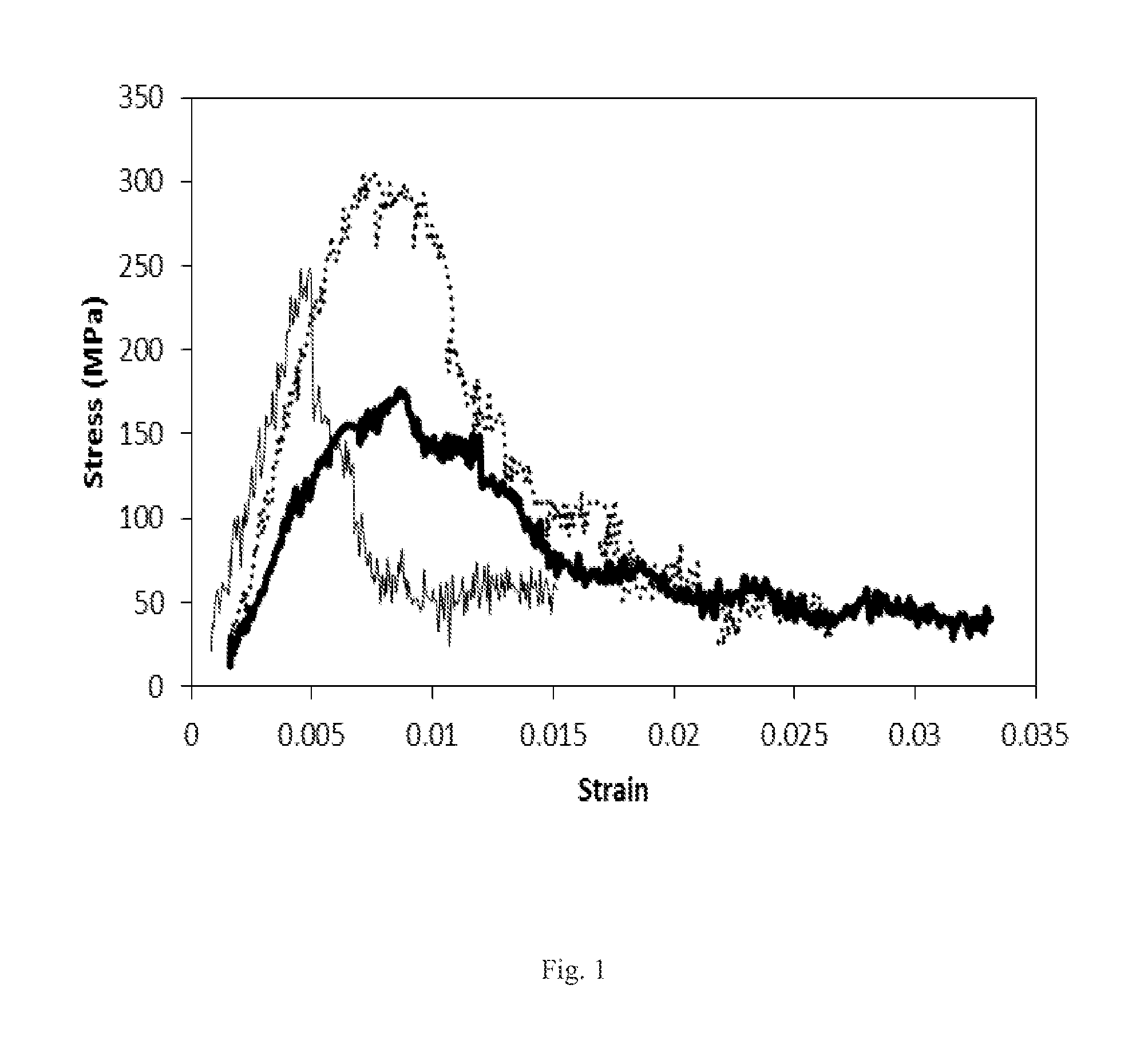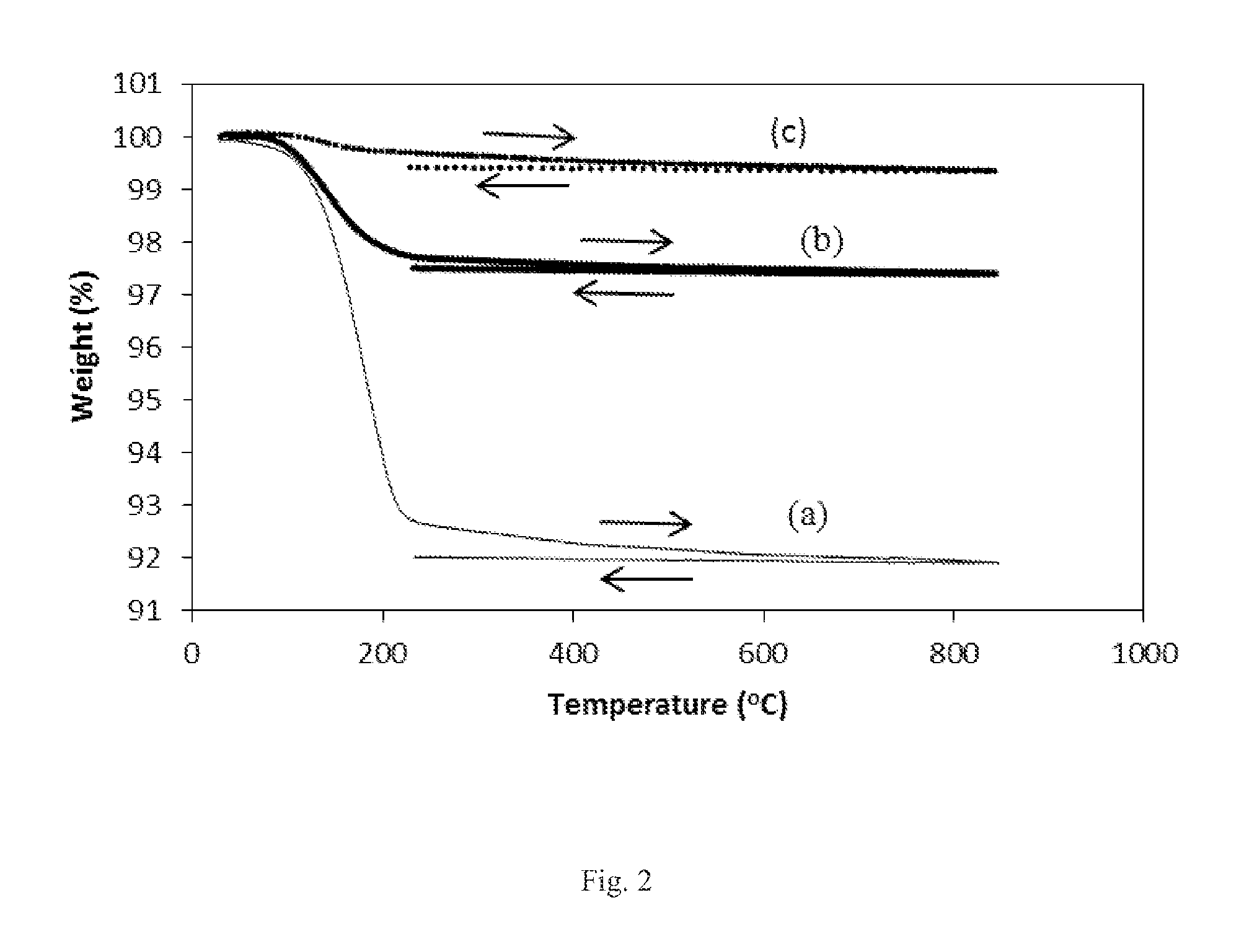Microstructured high-temperature hybrid material, its composite material and method of making
a hybrid material and microstructure technology, applied in the field of hybrid materials, can solve the problems of weak interface between adjoining constituents, a challenge to the development of composite materials, and the individual constituents cannot provide the properties of the individual constituents, and achieve the effect of strength, stiffness and ability
- Summary
- Abstract
- Description
- Claims
- Application Information
AI Technical Summary
Benefits of technology
Problems solved by technology
Method used
Image
Examples
example 1
Ingredients
[0095]This example describes the ingredients used for evaluation of the invented materials in comparison with competing materials.
[0096]Organo-modified clay (called organoclay, also called nanoclay) is manufactured by modifying clay with quaternary ammonium cations via a cation exchange process. The organoclay used is a natural montmorillonite that has been intercalated with a quaternary ammonium salt (dimethyl, dihydrogenated tallow) with chloride anions. Montmorillonite constitutes 90% of the composition of an industrial grade bentonite. The basal spacing d001=31.5 Å, as shown by X-ray diffraction (XRD). The particles are white (more exactly, off white) and have a feathery morphology.
[0097]The molecules that constitute the organic component in the organoclay are of the form
The hydrogenated tallow (abbreviated HT in the schematic above) in the ammonium cation involves ˜65% fatty acids with 18 carbon atoms in the alkyl carbon chain in each molecule, ˜30% fatty acids with ...
example 2
Carbon-Carbon Composite Fabrication Method
[0102]This example describes the method used for the fabrication of carbon-carbon (abbreviated C / C) composites. The ingredients are as described in Example 1.
[0103]The organoclay and pitch powder in the mass ratio of 1:4 are dry mixed in a ball mill (without grinding balls) for 24 h for the purpose of initial mixing. Then the mixture is dispersed in water that contains 0.1 wt. % dissolved PEO, such that the dispersion contains 10 wt. % organoclay-pitch mixture. The dispersion is stirred manually for 10-20 min, followed by 2.0 h of magnetic stirring, in order to achieve an adequate degree of mixing. The carbon fiber tow is immersed in the dispersion for 3.0 h in order for the tow to be coated with the organoclay-pitch mixture.
[0104]The mass ratio of the immersed fibers to pitch (in the dispersion) to organoclay (also in the dispersion) is 50:40:10. This proportion is such that the entirety of the liquid-based dispersion is consumed in coating...
example 3
Ceramic-Carbon Hybrid Material Fabrication Method
[0108]This example describes the method of fabricating a ceramic-carbon hybrid material. The ingredients are as described in Example 1.
[0109]Clay particles in the amount of 4.00 g (unless stated otherwise) are hot-pressed in the absence of any other ingredient, using the same graphite mold and the same process as in Example 2. Two types of clay particles are used, namely organoclay and sodium bentonite (without an organic component), in order to investigate the effect of the organic component. Either type of clay is placed in the graphite mold under a nitrogen purge at a flow of 70 ml / min.
PUM
| Property | Measurement | Unit |
|---|---|---|
| temperature | aaaaa | aaaaa |
| temperature | aaaaa | aaaaa |
| pressure | aaaaa | aaaaa |
Abstract
Description
Claims
Application Information
 Login to View More
Login to View More - R&D
- Intellectual Property
- Life Sciences
- Materials
- Tech Scout
- Unparalleled Data Quality
- Higher Quality Content
- 60% Fewer Hallucinations
Browse by: Latest US Patents, China's latest patents, Technical Efficacy Thesaurus, Application Domain, Technology Topic, Popular Technical Reports.
© 2025 PatSnap. All rights reserved.Legal|Privacy policy|Modern Slavery Act Transparency Statement|Sitemap|About US| Contact US: help@patsnap.com



